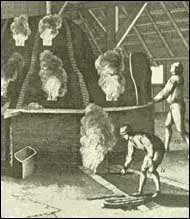The History of Murano Glass

Probably glass was first made by accident some time during the Bronze age, but no precise date can be given.
Some coloured glass beads have been found in Syria, dating from about 5,000 BC and others in Egypt probably made about 4,000 BC. There are many theories and hypotheses about the origins of glass. The most credible says that glass was probably discovered by accident, by potters or metal workers, who had learnt the skills of building kilns and creating high temperatures.
Some coloured glass beads have been found in Syria, dating from about 5,000 BC and others in Egypt probably made about 4,000 BC. There are many theories and hypotheses about the origins of glass. The most credible says that glass was probably discovered by accident, by potters or metal workers, who had learnt the skills of building kilns and creating high temperatures.





Glass was known and used in all the most important civilisations: Assyrian, Babylonian, Phoenician, Egyptian, Greek, Roman and, lastly Venetian. Over thousands of years the skills of glass making spread slowly throughout the Mediterranean basin.
The tradition of glass making on the islands of the Venetian lagoon goes back at least thousand years (the first official, dated document mentioning a Venetian glass blower was drawn up in 982). Long before the end of the 13th century there were already established glassworks on Murano.
On Nov. 8th, 1291, the Consiglio Maggiore (the Great Council a governing body) decreed that all the furnaces currently operating in the town should be demolished but at the same time it also authorised the construction smaller kilns, with more restricted production.
Over time, knowledge about glass and its properties has been continuously added to, and many new techniques have been developed.

Lead crystal was added to the repertoire of Venetian glass makers during the Renaissance period. Angelo Barovier was the first to make it, in 1480. A glass mirror made in 1493 can still be seen on the island.
Angelo Barovier also developed another technique “Caledonia”.
During the next century, about 1527, a further new and extraordinary technique appeared on the island: filigree glass, which has a design of overlaid glass rods.
Over the past 100 years, the innovations have been of a more technological nature. Instead of using bellows to make a wood fires burn, glass blowers began to use oil fired kilns and then, later, butane gas which offers almost unlimited possibilities for developing high temperatures and obtaining top quality materials with no impurities.
The high quality silicate sand used to make the glass is imported from nearby France and Switzerland. It is mixed with sodium carbonate and calcium and borax from the U.S.A. Sodium nitrate and antimony are used to obtain clear glass and diverse mineral oxides are mixed together in order to obtain the hundreds of different shades and colours we see today.
Before the Second World War, Venice’s glass was well known in Europe, but since then its popularity has spread and it is now sought after all over the world.



LINEA MURANO ART s.r.l. Fondamenta Manin 1, - zip 30141 Murano Venice - ITALY

